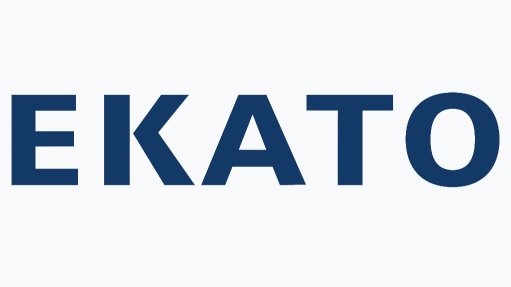Consultant emphasises importance of careful selection of galvanised steel sheet for light metal frame structures, roofing
Careful selection of continuously galvanised steel sheet products can help to avoid premature corrosion of roofing and cladding on buildings, says galvanising consultant Terry Smith.
Continuously galvanised sheet is produced in a hot-dip galvanising process, after which it may be further coated with an organic paint to provide additional corrosion protection and offer an attractive colour finish for exterior application on buildings.
Often called “pre-galvanised” or “galvanised sheeting”, Smith explained that galvanised steel sheeting is a coil of sheet steel (up to 1.8 m wide) which is de-coiled, welded end-on-end, degreased, cleaned and then passed through an annealing surface at about 900 °C where softening and de-oxidation takes place.
Travelling at up to 180 m a minute, the sheet then passes through a bath of molten zinc heated to about 450 °C.
As the steel exits the zinc bath, it travels through a series of gas or air-knives, which control the coating thickness on the surface of the steel sheet. This is a cost-effective, abrasion-resistant, corrosion control barrier that will generally provide a maintenance-free lifespan - in some cases in excess of 30 years, he explains.
Zinc is at the heart of hot dip galvanising.
Continuous galvanising of steel sheet is a cost-effective way of extending the steel sheet’s service life in a variety of indoor and outdoor environments. It also assists in prolonging the lifespan of roofing and light metal frame structures, especially in corrosive environments, such as those close to the sea.
However, Smith further explained: “Only galvanised sheeting with a Z275 coating that has been further protected with a resilient organic paint layer can be selected for use on roofing near the coast.”
Continuously galvanised sheeting should be stored undercover and in such a way that moisture does not enter the coil or between stacked sheets as this will ultimately consume the zinc coating and lead to rusting of the steel sheet.
“If a light metal frame structure made from continuously galvanised materials is enclosed in a protective envelope of external cladding,” says Smith, “then the galvanised framework will last for a long period in excess of 30 years, as once the zinc carbonate patina has formed on the sheet the zinc coating provides a predictable and slowly corroding barrier”.
To prevent going down the corrosion degradation road, he urged industry members and engineers to properly consider the environment in which the galvanised steel sheet would be used, and to understand the site conditions and specifics correctly.
Smith provided insight into galvanised steel and its corrosion-related benefits during an International Zinc Association (IZA) webinar hosted by Creamer Media on September 16.
IZA corrosion expert Simon Norton also spoke during the webinar, and offered insights to engineers on how zinc galvanised coatings and aluminium-zinc galvanised coatings on continuously galvanised steel sheet worked to protect the steel from the external atmospheric environment and prevent corrosion.
Norton familiarised engineers with galvanised coatings such as Aluzinc, Galfan, Galvalume and Galvanneal.
Technology and marketing development director Martin van Leeuwen from IZA Brussels gave a very detailed overview of the process by which continuous galvanised sheet is manufactured and prepared both prior to and post galvanizing and then outlined the numerous ASTM, ISO and SABS specifications which would be of considerable value to design and consulting engineers.
Article Enquiry
Email Article
Save Article
Feedback
To advertise email advertising@creamermedia.co.za or click here
Comments
Press Office
Announcements
What's On
Subscribe to improve your user experience...
Option 1 (equivalent of R125 a month):
Receive a weekly copy of Creamer Media's Engineering News & Mining Weekly magazine
(print copy for those in South Africa and e-magazine for those outside of South Africa)
Receive daily email newsletters
Access to full search results
Access archive of magazine back copies
Access to Projects in Progress
Access to ONE Research Report of your choice in PDF format
Option 2 (equivalent of R375 a month):
All benefits from Option 1
PLUS
Access to Creamer Media's Research Channel Africa for ALL Research Reports, in PDF format, on various industrial and mining sectors
including Electricity; Water; Energy Transition; Hydrogen; Roads, Rail and Ports; Coal; Gold; Platinum; Battery Metals; etc.
Already a subscriber?
Forgotten your password?
Receive weekly copy of Creamer Media's Engineering News & Mining Weekly magazine (print copy for those in South Africa and e-magazine for those outside of South Africa)
➕
Recieve daily email newsletters
➕
Access to full search results
➕
Access archive of magazine back copies
➕
Access to Projects in Progress
➕
Access to ONE Research Report of your choice in PDF format
RESEARCH CHANNEL AFRICA
R4500 (equivalent of R375 a month)
SUBSCRIBEAll benefits from Option 1
➕
Access to Creamer Media's Research Channel Africa for ALL Research Reports on various industrial and mining sectors, in PDF format, including on:
Electricity
➕
Water
➕
Energy Transition
➕
Hydrogen
➕
Roads, Rail and Ports
➕
Coal
➕
Gold
➕
Platinum
➕
Battery Metals
➕
etc.
Receive all benefits from Option 1 or Option 2 delivered to numerous people at your company
➕
Multiple User names and Passwords for simultaneous log-ins
➕
Intranet integration access to all in your organisation














